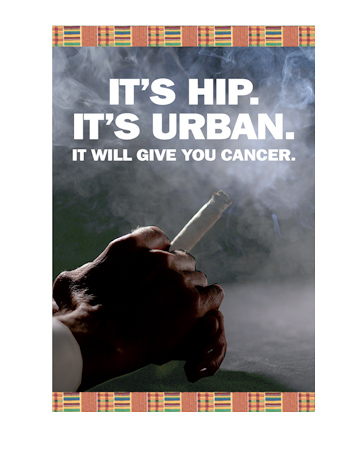Science & Technology/Tobacco Ads Target Blacks, Study Led by Primack Finds

Brian Primack
African Americans are exposed to more pro-tobacco advertising than Whites are, according to a Pitt School of Medicine study published last month in Public Health Reports.
Smoking remains the leading cause of preventable death and disease in the United States, causing more than 440,000 deaths annually and costing more than $150 billion in direct and indirect costs each year. African Americans currently bear the greatest burden of this morbidity and mortality.
Although exposure to pro-tobacco media messages is now known to be a potent risk factor for tobacco use, whether Blacks are, in fact, exposed to more pro-tobacco advertising has been unclear until now.
“This review and meta-analysis demonstrates that African Americans are indeed disproportionately exposed to pro-tobacco mass media messages in terms of both concentration and density,” said Brian A. Primack, senior author of the study and a Pitt assistant professor of medicine and pediatrics. “These findings will help us develop interventions and further research aimed at reducing tobacco-related health disparities.”
In the study, Primack and colleagues evaluated data from both predominantly African American and White markets using studies from peer-reviewed journals. By extracting the number of total media messages, the number of tobacco-related messages, and the number of residents living in each market area, they were able to calculate the concentration and density of tobacco advertising in each market.
Concentration of tobacco advertising can be defined as the number of tobacco advertisements divided by the total number of advertisements.
“According to our data, the concentration of pro-smoking signage is approximately 70 percent higher for African Americans,” Primack said. “Our results also showed that there are about 2.6 times as many advertisements per person in African American areas as compared to Caucasian areas.”

The findings suggest that Blacks may be special targets of the tobacco industry.
“This population may require specific public health interventions to counter the effect of unbalanced pro-tobacco promotion,” Primack said. “Knowing that they may be targeted could motivate African Americans to refuse to fall prey to industry tactics and help them avoid smoking.”
Primack and his fellow researchers pointed out limitations of their study. In particular, they said, the studies that met criteria for inclusion in this review focused on older forms of advertising and promotion, such as billboards and magazines. This suggests that additional research is needed on current media portrayals of smoking, such as tobacco promotions and smoking in films.
Coauthors of the study included James E. Bost, a professor of medicine in the Pitt medical school’s Department of Neurological Surgery; Michael J. Fine, professor in the medical school’s Department of Behavioral and Community Health Sciences; and Stephanie R. Land, research assistant professor in the Pitt Graduate School of Public Health’s Department of Biostatistics.
Primack’s research was supported by a Physician Faculty Scholars Award from the Robert Wood Johnson Foundation, a career development grant from the National Cancer Institute, and a grant from the Maurice Falk Foundation. Fine’s work was supported in part by a career development award from the National Institute of Allergy and Infectious Diseases.
Other Stories From This Issue
On the Freedom Road

Follow a group of Pitt students on the Returning to the Roots of Civil Rights bus tour, a nine-day, 2,300-mile journey crisscrossing five states.
Day 1: The Awakening
Day 2: Deep Impressions
Day 3: Music, Montgomery, and More
Day 4: Looking Back, Looking Forward
Day 5: Learning to Remember
Day 6: The Mountaintop
Day 7: Slavery and Beyond
Day 8: Lessons to Bring Home
Day 9: Final Lessons

